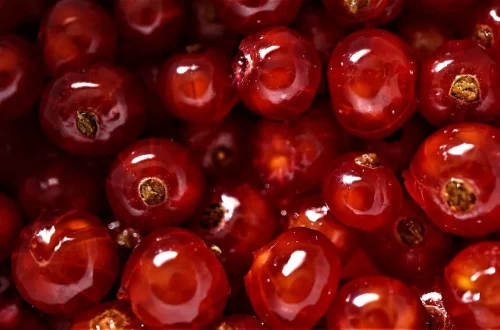
Understanding Baby Clicking Sounds During Bottle Feeding
Feeding a baby is not merely a routine task; it is an intricate dance of communication and bonding. During bottle feeding, every sound, every movement, and every reaction carries significant meaning. Among these, the clicking sounds that a baby occasionally makes while feeding can be both endearing and perplexing for new parents. These sounds can arise for various reasons and can indicate different things about the baby’s feeding experience. Understanding these clicks is crucial for caregivers, as it can help identify whether the baby is comfortable, experiencing difficulties, or communicating other needs.
In the early days of parenthood, every little nuance can feel overwhelming, especially when it comes to feeding. Bottle feeding offers a unique opportunity for bonding, but it also brings its challenges. One such challenge is deciphering the series of noises that can accompany feeding. Are these clicks a sign of contentment or discomfort? Should parents be concerned, or is this simply a part of the learning process? By paying close attention to these sounds and understanding their context, caregivers can enhance their feeding experience and nurture a stronger connection with their babies.
Understanding the Mechanics of Baby Feeding Sounds
The sounds a baby makes while feeding can be attributed to various physiological and mechanical factors. A baby’s mouth is a complex structure designed for feeding, and the way they latch onto a bottle can significantly influence the sounds produced. When a baby is bottle feeding, they create a vacuum seal around the nipple. This seal is necessary for milk to flow properly. If the seal is not perfect, air can be sucked in, leading to clicking or smacking sounds.
These sounds often indicate that the baby is adjusting their latch. Newborns are still learning how to coordinate their sucking, swallowing, and breathing. As they become more adept at feeding, these sounds may become less frequent. On the other hand, if a baby continues to make clicking sounds consistently, it may suggest that they are not latching properly. A proper latch is essential for effective feeding and to ensure that the baby is receiving enough milk.
Another factor that can contribute to clicking sounds is the type of bottle and nipple being used. Different shapes and sizes can affect how a baby feeds and how they create a vacuum. For example, a nipple that is too fast-flowing may cause a baby to gulp and make more noise, while a slow-flowing nipple may lead to frustration and more air intake. Parents may want to experiment with different bottle and nipple combinations to find what works best for their baby.
Common Reasons for Clicking Sounds During Feeding
There are several common reasons why a baby might make clicking sounds while bottle feeding. One of the most prevalent is an improper latch. When a baby does not create a secure seal around the nipple, air can enter the mouth, causing clicking sounds. This often occurs when the nipple is too large or too small for the baby’s mouth or when the baby is not positioned correctly. Ensuring that the baby is properly aligned with the bottle and that the nipple is appropriately sized can help minimize these sounds.
Another reason for clicking is the baby’s sucking technique. Some babies may suck in a way that causes them to gulp air, leading to clicking or popping noises. This is especially common in newborns who are still mastering the art of feeding. As babies grow and develop, their sucking patterns usually become more efficient, resulting in fewer sounds.
Additionally, the flow of milk can play a significant role in the sounds a baby makes. If the milk flows too quickly, it can overwhelm the baby, causing them to gulp and make noise. Conversely, if the flow is too slow, the baby may become frustrated, leading to clicking sounds as they try to adjust their feeding technique. Parents can experiment with different nipple flows to find the right balance for their baby, ensuring a more comfortable feeding experience.
Lastly, the baby’s overall comfort level during feeding can influence the sounds they make. If a baby is hungry, tired, or uncomfortable, they may be more likely to produce clicking sounds. Creating a calm and soothing feeding environment can help reduce stress for both the baby and the caregiver, leading to a more enjoyable feeding experience.
When to Be Concerned About Feeding Sounds
While many clicking sounds during bottle feeding are normal, there are instances where they may indicate a problem. If a baby consistently struggles with latching or makes clicking sounds accompanied by signs of distress, it may be time to consult a pediatrician or a lactation consultant. Observing the baby’s behavior during feeding can provide valuable insights. For example, if a baby appears frustrated, pulls away frequently, or exhibits signs of discomfort, these may be indicators that something is amiss.
Another concern arises when a baby is not gaining weight appropriately. If clicking sounds are persistent and the baby shows signs of inadequate milk intake—such as fewer wet diapers or a lack of weight gain—parents should seek professional advice. A healthcare provider can assess the baby’s feeding technique and offer recommendations to improve the situation.
Additionally, if the clicking sounds are accompanied by other symptoms such as coughing, choking, or gagging, it may indicate that the baby is aspirating, which can be dangerous. In such cases, immediate medical attention is necessary.
Understanding the nuances of feeding sounds can help parents distinguish between normal behavior and potential issues. Regular check-ups with a pediatrician can also provide reassurance and guidance on feeding practices.
Tips for Improving Bottle Feeding Experience
To enhance the bottle feeding experience and reduce unwanted clicking sounds, there are several tips that parents can follow. First, ensuring that the baby is in a comfortable and supportive position is crucial. Holding the baby in a semi-upright position can facilitate better feeding and create a more secure latch. Supportive pillows or a designated feeding chair can help both the baby and the caregiver feel more at ease during feeding.
Choosing the right bottle and nipple is also essential. It may take some trial and error to find the best combination for a baby. Parents should look for bottles that mimic breastfeeding, as these may help the baby transition more easily between bottle and breast. Nipple shapes and flow rates should be matched to the baby’s age and feeding style.
Creating a calm feeding environment can also make a significant difference. Reducing distractions, maintaining a comfortable room temperature, and using soft lighting can help the baby feel relaxed and focused on feeding. Additionally, establishing a routine can signal to the baby that it’s time to feed, promoting a more peaceful experience.
Finally, being patient and responsive to the baby’s needs is key. Observing the baby’s cues and adjusting the feeding approach accordingly can lead to a more enjoyable experience for both the baby and the caregiver. As with any aspect of parenting, practice and patience are essential.
In conclusion, understanding baby clicking sounds during bottle feeding is an important part of fostering a positive feeding experience. While not all clicking sounds are a cause for concern, being attentive to these nuances can help parents ensure their baby is comfortable and thriving.
**Disclaimer:** This article is for informational purposes only and does not constitute medical advice. For any health-related concerns, please consult with a qualified healthcare professional.




